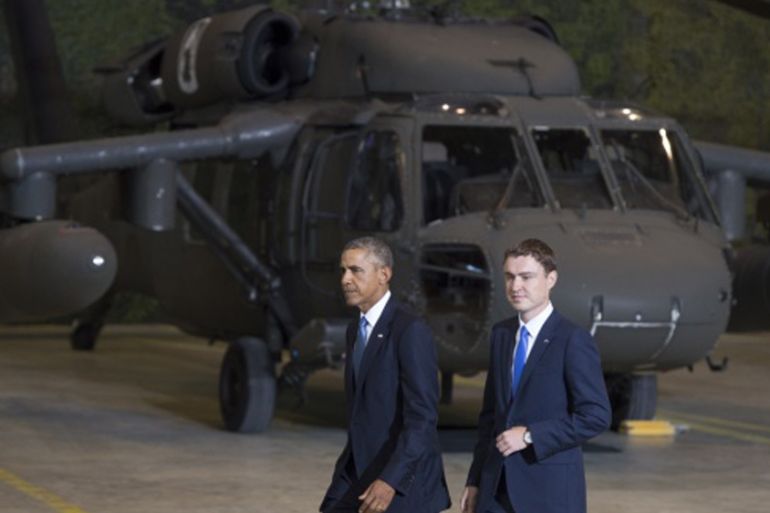Do not forget about Eston Kohver
The international community must pressure Moscow to release abducted Estonian internal security officer.

On September 3, 2014, US President Barack Obama stood in the centre of Tallinn, the capital of Estonia, and told the world that the defence and security of all the Baltic States is always guaranteed by the US and the North Atlantic Treaty Origination (NATO).
Less than 48 hours later, Russian agents crossed the border and abducted Eston Kohver, an Estonian Internal Security Service officer. This was a well-planned abduction. Communications-jamming equipment was used, as were smoke bombs and stun grenades. Perhaps most shockingly, Russian agents kidnapped Kohver at gunpoint not in Russia, but on Estonian soil in the quiet village of Miikse nine kilometres from the nearest border crossing.
|
|
After Kohver’s abduction he was rushed across the border into Russia, whisked off to Moscow, and quickly paraded on Russian television. Today, he sits in Lefortovo Prison – a drab mass of concrete in Moscow built in 1881.
Lefortovo Prison served as torture chamber for the NKVD, Joseph Stalin’s secret police. It served as a home to hundreds of political prisoners for the KGB. Today, the FSB – the successor to the KGB – operates the prison. Not a pleasant place to be, but Kohver has no choice.
Abduction and detention
Since his abduction six months ago Kohver has only been allowed to call his family on three occasions. It took almost four months before Russian officials finally allowed an Estonian doctor to see him. The Estonian Embassy in Moscow is only allowed to meet with him fortnightly, and then only under the surveillance of the FSB. Kohver has been accused of espionage. If convicted, he will face between 10-20 years in prison.
Russia claims that Kohver was caught on the Russian side of the border and was carrying a pistol, a recording device, and about $5,300 in cash. The Estonian government did not dispute that Kohver was carrying these items – pointing out that as a member of the Internal Security Service working on an anti-smuggling operation this was nothing unusual.
Estonian President Toomas Hendrik Ilves quickly and staunchly refuted the allegation that Kohver was inside Russian territory at the time, and the Estonian government continues to do so to this day.
The Estonian-Russian border has long been a source of tension between the two countries. A sizeable and significant portion of Estonia’s Russian speaking and ethnic Russian population lives along the border.
A disputed border
Estonia is the only Baltic country that does not have an officially agreed border with Russia. When Estonia enjoyed a brief period of independence between the two world wars, its border with the then Soviet Union was based on the 1920 Treaty of Tartu.
The Kremlin knows that kidnappings, cyber-attacks, the use of oil and gas as tools of aggression, and even overseas assassination of political dissidents ... are not enough to warrant NATO triggering its mutual defence clause.
In 1945, after the Soviet Union occupied and then absorbed Estonia, Moscow re-drew the administrative border between the Soviet Union and the Estonian Soviet Socialist Republic in such a way that 10 percent of Estonian territory, as agreed in the Treaty of Tartu, was transferred to the USSR.
After Estonia regained its independence in the 1990s, officials in Tallinn, for the sake of peace, agreed to drop any territorial claims dating back to the Treaty of Tartu and keep the de facto border based on the 1945 border – even though this meant handing 10 percent of the country’s territory to Russia.
It was not until February 2014 that both sides agreed and signed a new border treaty. The Estonian parliament is set to ratify the treaty, but officials in the Russian Duma have warned Tallinn not to expect Russian ratification due to current NATO-Russian tensions.
Russia’s hybrid warfare
Can we expect more incidents like Kohver’s kidnapping from Russia? Absolutely. The kidnapping was straight out of the Russian playbook. Russia will do whatever it knows it can get away with. This is why Moscow has developed a penchant for hybrid warfare – a form of aggression that is unlike traditional warfare but still has serious security implications.
The Kremlin knows that kidnappings, cyber-attacks, the use of oil and gas as tools of aggression, and even overseas assassination of political dissidents – all forms of hybrid warfare – are not enough to warrant NATO triggering its mutual defence clause. Until NATO develops a strategy to respond to Russia’s hybrid warfare, the Alliance remains in a position of weakness.
As more details emerge of the circumstances surrounding Kohver’s abduction, the dodgier the situation looks. It is a personal tragedy for Kohver and is family that he has already been denied six months of his freedom and that he could be locked away for 20 years. With everything going on in the world it would be easy to forget about Kohver’s abduction and detention, but this would be wrong.
The international community needs to pressure Moscow to release Kohver. Until this happens, Russia must be held to account.
Luke Coffey is a research fellow specialising in transatlantic and Eurasian security at a Washington DC based think-tank. He previously served as a special adviser to the British defence secretary and was a commissioned officer in the United States army.
The views expressed in this article are the author’s own and do not necessarily reflect Al Jazeera’s editorial policy.
